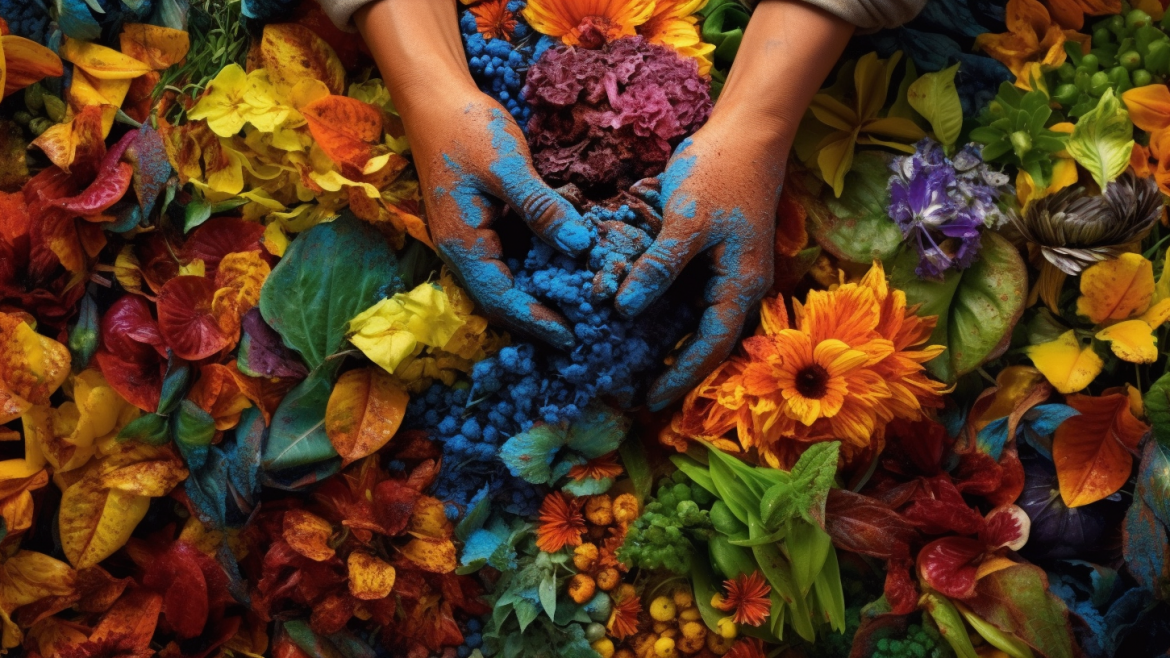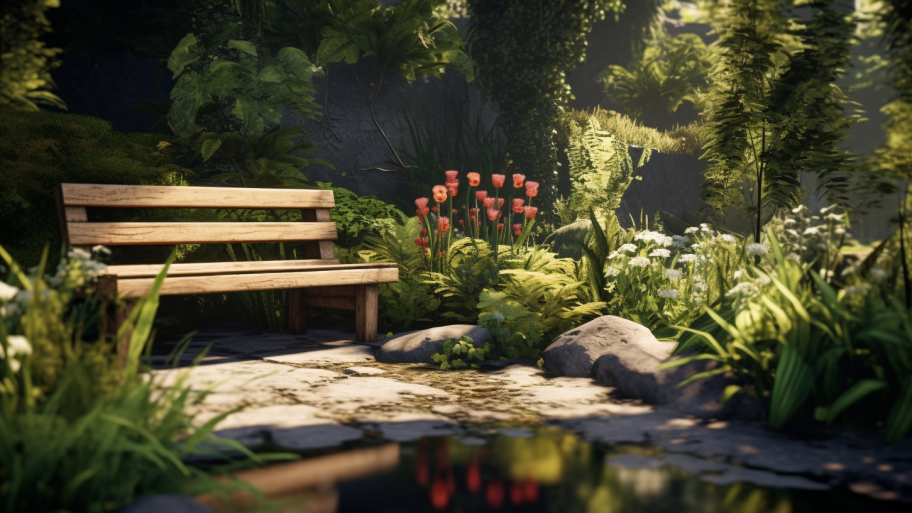With your dye garden flourishing and your plants harvested, it’s time to transform your colorful bounty into stunning, eco-friendly dyes for your fabrics and yarns. In this article, we’ll delve into the fascinating process of extracting plant dyes and applying them to your textiles, creating unique, one-of-a-kind garments that showcase the beauty of nature’s palette.
The Art of Extraction: Unlocking the Colors of Your Dye Plants
The first step in working with plant dyes is extracting the pigments from your harvested plant material. Here’s a general overview of the extraction process for most dye plants:
- Clean and prep: Rinse your harvested plant material to remove any dirt or debris, and chop it into smaller pieces to increase the surface area for better dye extraction.
- Simmer and soak: Place the plant material in a non-reactive pot, cover it with water, and bring it to a gentle simmer. Allow the plant material to simmer and steep for at least an hour, or until the water takes on a rich, vibrant hue.
- Strain and cool: Once your dye has reached the desired color intensity, strain the plant material from the dye bath and let the liquid cool.
With your dye bath ready, it’s time to prepare your fabrics and yarns for the dyeing process.
Preparing Your Textiles: Mordants and Techniques
To ensure that your plant dyes adhere well to your textiles and produce long-lasting, vibrant colors, it’s essential to use a mordant—a substance that helps bind the dye to the fibers. Common mordants include alum, iron, and copper, each of which can also influence the final color of your dyed fabric or yarn.
- Choose your mordant: Research the best mordant for your specific dye plant and textile, as different combinations can yield varying results.
- Treat your textile: Dissolve the mordant in water and soak your fabric or yarn for several hours or overnight, following the mordant’s recommended guidelines.
- Rinse and dry: Remove your textile from the mordant bath, rinse it thoroughly, and allow it to dry completely before proceeding with the dyeing process.
With your textiles prepped and ready, you can now immerse them in your plant dye bath and watch the magic unfold.
Dyeing Your Textiles: Techniques and Tips for Brilliant Results
The final step in your plant dye journey is to immerse your pre-treated textiles in the dye bath and let the pigments work their magic. Here are some tips for achieving brilliant, even coloration:
- Wet your textile: Before placing your fabric or yarn in the dye bath, wet it thoroughly to ensure even dye absorption.
- Submerge and stir: Gently submerge your textile in the dye bath, using a non-reactive utensil to stir and ensure even contact with the dye.
- Monitor and adjust: Keep an eye on your textile as it soaks in the dye bath, adjusting the temperature and soak time as needed to achieve the desired color intensity.
Once your textile has reached the desired color, remove it from the dye bath, rinse it thoroughly, and allow it to dry. Congratulations—you’ve transformed your homegrown plants into stunning, eco-friendly dyes for your fabrics and yarns!
To help you on your plant dye journey, consider these Amazon products that can enhance your dyeing experience:
- The Modern Natural Dyer: A Comprehensive Guide to Dyeing Silk, Wool, Linen, and Cotton at Home – An indispensable guide for natural dye enthusiasts, filled with practical advice for dyeing a variety of fabrics at home.
- Non-Reactive Stainless Steel Dye Pot with Lid – A 16-quart, non-reactive stainless steel pot, ideal for preserving the true colors of your dyes and maintaining temperature consistency.
- Alum (Aluminum Sulfate) Mordant Powder – A widely used mordant in the natural dyeing process that helps achieve vibrant, long-lasting colors.
- Multipurpose Glass Stirring Rods for Dyeing – A set of 8 glass rods perfect for stirring dyes, ensuring a smooth process without cross-contamination.
- Organic Cotton Muslin Fabric – Perfect for Dyeing Projects – A 100% organic cotton fabric, whose natural fibers and fine weave make it ideal for absorbing dyes in various projects.
With these products, you’ll have everything you need to explore the vibrant world of plant dyes and create unique, eco-friendly garments that showcase the beauty of nature’s palette.
In summary, growing and harvesting your own dye plants, extracting their pigments, and dyeing your textiles is a rewarding and eco-friendly process. As you delve into the world of plant dyes, you’ll discover a vast array of colors and techniques that allow you to create stunning, one-of-a-kind textiles infused with the magic of nature. Happy dyeing!
If you enjoyed this journey into the colorful world of plant dye gardens, be sure to check out our other article series: “Sip Your Way to Bliss: Craft a Stunning Homegrown Tea Garden” and “Haunted Gardens: Creating Eerie, Mystical Spaces with Gothic Flora.” Unearth even more ways to connect with nature and elevate your gardening game to new heights!




